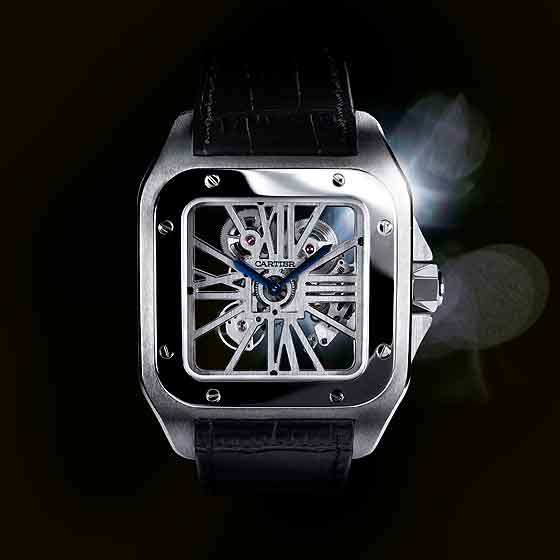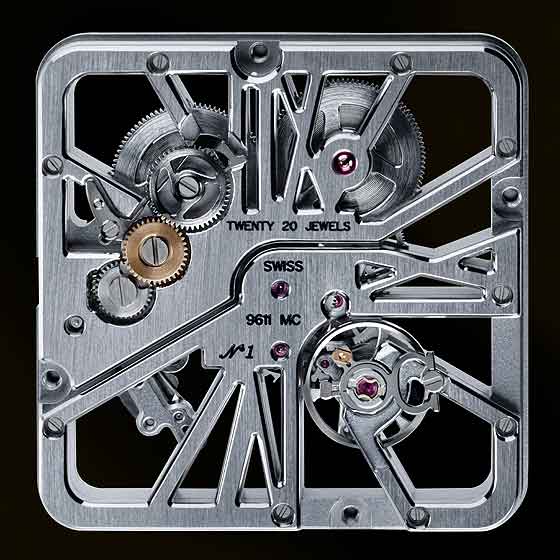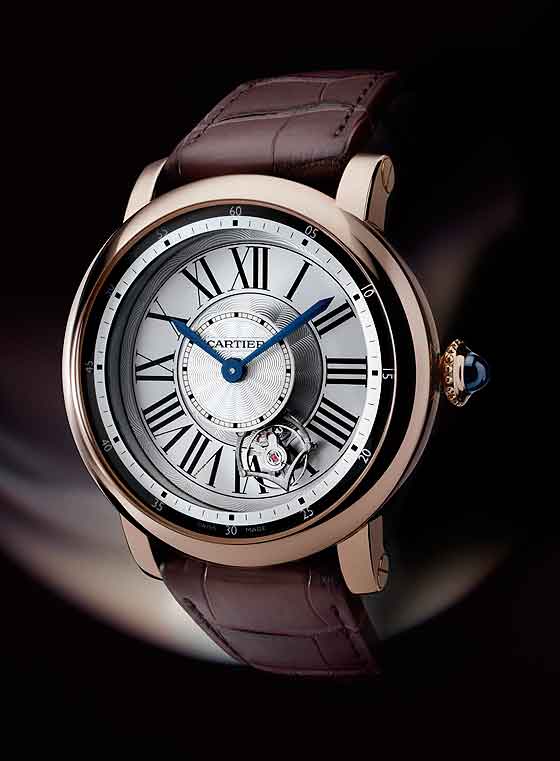In recent years Cartier, the fake watches sale for men king of haute joaillerie, has begun storming the bastions of haute horlogerie. In this full-length feature WatchTime’s Joe Thompson explores the intriguing origins and bold future initiatives of Manufacture Cartier.
In April 2008, Cartier startled the watch world with the introduction of its first ever Geneva Seal watch, the Ballon Bleu Flying Tourbillon. At the time, some watch industry observers (including this reporter) considered it a stunt.Cartier is a genuine watch power; it is either the second- or third-best-selling Swiss watch brand in the world after Rolex. (Omega and Cartier both claim to be number two.) However, famously French Cartier had no tradition of making mechanical movements in-house and no watch manufacturing roots whatsoever in the canton of Geneva, which is a key requirement to earn the allegedly prestigious Poinçon de Genève. So how did Cartier get the Geneva Seal?
In 2007, Cartier’s parent company, Richemont SA, acquired the production facilities of Manufacture Roger Dubuis in Geneva, which specialized in making Geneva Seal movements. Cartier promptly took over an atelier in the Dubuis facility and installed 10 master watchmakers there. The flying-tourbillon caliber they produced there, the 9452 MC, is based on a Roger Dubuis design. Voilà: Paris-based Cartier, with watch production facilities in La Chaux-de-Fonds and Fribourg, Switzerland, was transformed into a Geneva Seal brand. Technically it was legit. But the question lingered: Was the expertise really Cartier’s or was it Dubuis behind a Ballon Bleu facade? Two years later, it’s clear that it really was Cartier. What some saw as a stunt was actually a shot, an opening salvo announcing Cartier’s emergence as a bona fide mechanical movement producer with serious ambitions in high horology.
In the past two years, Cartier has rushed with Usain Bolt-like speed into the high-mechanical men’s market. It has unveiled 17 new men’s mechanical watches and nine new manufacture movements (including another Geneva Seal movement), at least six of them conceived, developed, prototyped, and produced entirely in Manufacture Cartier, the firm’s giant watchmaking facility in La Chaux-de-Fonds. Among them is a new base automatic caliber, 1904 MC (for Manufacture Cartier), the first Cartier has produced in-house. It was launched this year in a new Cartier men’s watch collection, Calibre de Cartier. Caliber 1904 MC will be the base movement for future Cartier automatic models, including those with complications.
Perhaps the most surprising new development at Cartier — and the best evidence of its burgeoning high-mech might — was the presentation last November of the Cartier ID One, a concept watch developed by Cartier engineers that may be the world’s first watch that never needs adjusting. The watch is loaded with innovative mechanisms and materials, inside and out, such as hairsprings made of Zerodur, a balance wheel made of carbon crystal, an oscillating weight coated with amorphous diamond-like carbon and a niobium-titanium case. It is currently ticking away in the research-and-development department in the manufacture under the engineers’ watchful eyes and promises to deliver new advances in high horology for future Cartier watches. (For details, see “Cartier’s Concept: A No Adjustment Watch” in the January-February 2010 issue of WatchTime.) All of these developments have left watch collectors and aficionados surprised, impressed, and confused. They identify Cartier more as a maker of jewelry, scarves and handbags for their wives than of high-mech marvels for themselves. What, they wonder, is going on?
What’s going on, according to top Cartier executives from Paris and La Chaux-de-Fonds, is a new chapter in the firm’s long, often illustrious watch history. Cartier execs acknowledge that Cartier today is more of a ladies’ line: it is the world’s top producer of jewelry watches. In the United States, for example, women’s models account for two-thirds of Cartier watch sales. Cartier execs also acknowledge that they are somewhat late to the luxury-mechanical-watch party and, at this point, don’t bring a lot of high-mech credibility with them. Nevertheless, they point out that their conversion to mechanical movement manufacturing is in keeping with Cartier’s identity as a maison (French for “house”) whose craftsmen and women historically produce its own luxury products, and with its heritage as a pioneer in men’s wristwatches with icons like the Santos and Tank.
Nor is Cartier’s mechanical conversion as sudden as it might seem. Cartier International CEO Bernard Fornas says its new men’s mechanical watches have been in development since 2005. They reflect a strategy undertaken on Fornas’s watch to shift the firm from being a mechanical-watch assembler relying on a network of suppliers for movements and parts to being a vertically integrated manufacture. To that end, Cartier has quietly spent a fortune over the past six years developing in-house the mechanical watch know-how it needed. The mission was not simply to have Cartier replica watches for lady uk take its place as a watch manufacture next to Vacheron Constantin, Jaeger-LeCoultre, A. Lange & Söhne, Piaget and other sister firms within the Richemont Group. It was to make movements that reflect Cartier’s image as a paragon of creativity and design. That has led to a dramatic transformation in Cartier’s watchmaking operations. Cartier decided to start making its own mechanical movements a year or so after Fornas became CEO in 2002. Cartier then, as now, produced several hundred thousand watches annually (the firm does not disclose the exact number). It was already vertically integrated for its quartz-watch production, a legacy of the 1980s and 1990s when Cartier was a quartz-watch powerhouse. In the 1990s, 80 percent of Cartier’s production was quartz. It produced almost all (90 percent) of its quartz movements in-house and manufactured a significant percentage of its cases and bracelets.
For its mechanical watches, however, like many Swiss watch firms, it was an assembler, relying on a network of outside suppliers for its mechanical movements. A decade ago Cartier’s movement supplier network worked well, says Jean-Kley Tullii, director of Manufacture Cartier, a 15-year Cartier veteran. The factory had access to mechanical movements from suppliers within the Richemont Group like Jaeger-LeCoultre and Piaget as well as a number of prominent outside suppliers like Girard-Perregaux. By 2004, however, with demand for mechanical watches soaring, rising to 40 percent of Cartier output (it’s now up to 50 percent), the movement issue came to a head. “Rapidly, we noticed that the network didn’t support the level of quality that we wanted,” Tullii says. There were other issues, too, like delays in getting deliveries of movements and concerns about securing spare parts from movement suppliers for future watch repairs. Overriding everything was the issue of what Cartier execs call “legitimacy.” “You cannot ask someone else to make the product for you,” says Carole Forestier-Kasapi, the movement development chief at Manufacture Cartier. “At a certain point you have to do it yourself.” As Fornas puts it, “Nobody is better served than by oneself.” Gradually it became clear that Cartier must become master of its mechanical-watch fate. Says Tullii, “We said, ‘OK, we have to invest and master all the steps.”
As part of the reorganization, Cartier hired from outside and developed inside the talent it needed to make mechanical watches for its Fine Watchmaking collection. It built a movement development department around the highly respected French-born Forestier-Kasapi, who worked with Giulio Papi at Audemars Piguet Renaud & Papi before joining Cartier 10 years ago. She now oversees 20 people. Cartier’s R&D department has 12 engineers. For the last half of the last decade these people were nestled in their new ateliers in Manufacture Cartier engaged in a frenzy of mechanical watch activity, developing all at once Cartier’s first in-house automatic movement, a slew of new mechanical movements, and the ID One concept watch. The result is a series of new Cartier men’s watches notable for their design creativity and technical ingenuity. Take the two watches containing Cartier’s first mechanical movements created and produced entirely in-house, the Santos 100 Skeleton and Rotonde de Cartier Central Chronograph, introduced last year. The Santos 100 Skeleton differs from other skeleton watches in that Forestier-Kasapi designed the movement to display the time. Her patented design shaped the movement’s bridges to form Roman numerals at the XII, III, VI and IX positions. Caliber 9611 MC is square-shaped to fit the palladium Santos case. Another novelty is the fine-adjustment pointer designed in the shape of Cartier’s stylized “C.” Cartier designers use the “C” motif freely on various watch parts. Another example: Cartier’s new Calibre de Cartier Flying Tourbillon watch ($130,000) — one of two new Geneva Seal watches it introduced AAA grade replica rolex this year, bringing the total to five — has a C-shaped tourbillon carriage.


